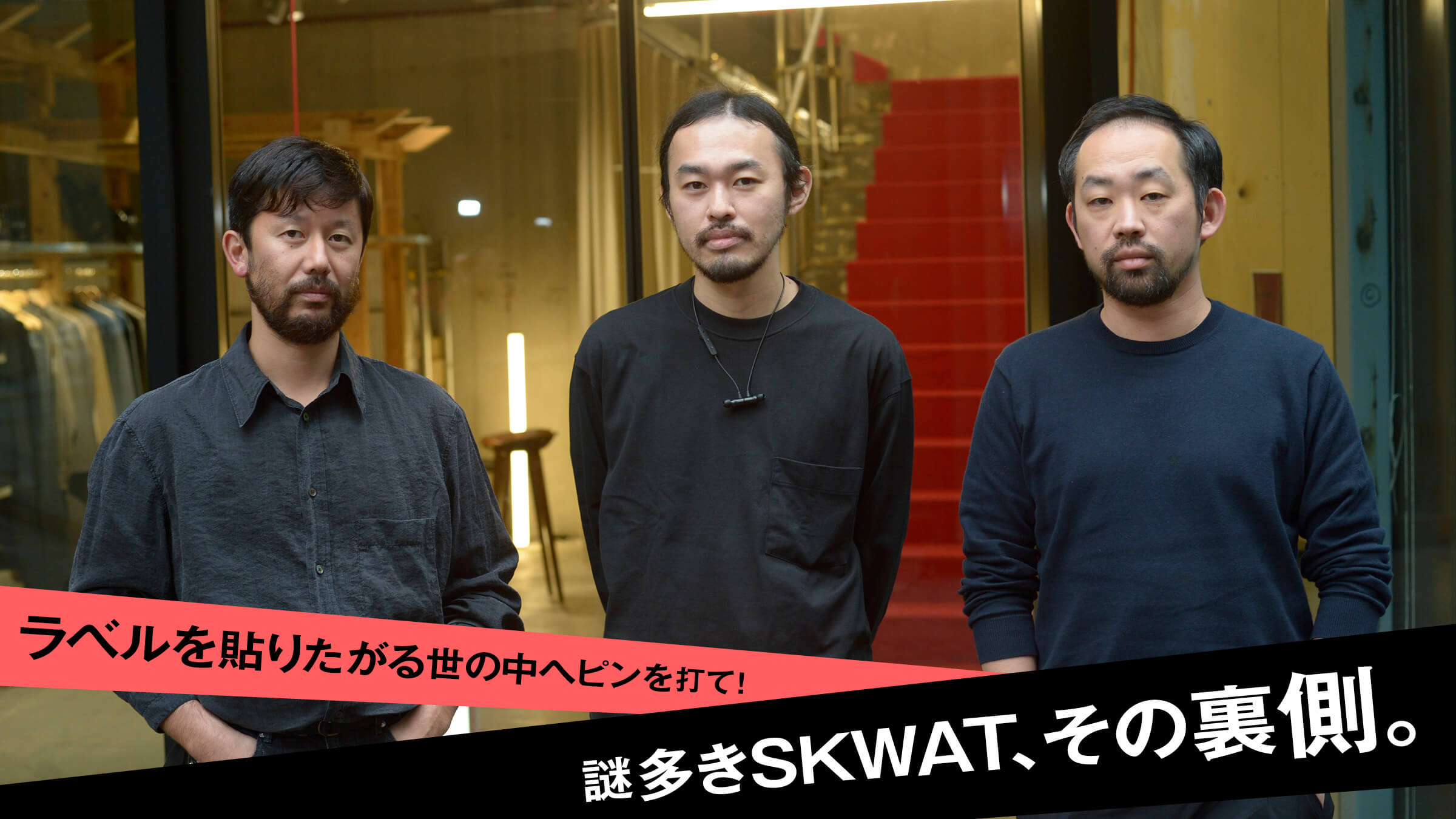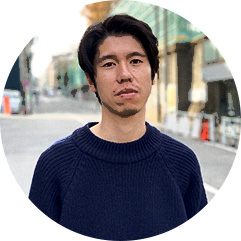In an area of luxury, a shift in value occurs.
. I finally understand how you all relate to each other. I think it's hard to explain SKWAT in a nutshell, but can you tell us again what kind of project SKWAT is?
Nakamura:
. The project was originally designed with the "Tokyo Olympics" in mind. After the Olympics are over, there will be legacy issues such as vacant houses in the city. When I thought about what kind of approach I could take to this problem as a member of "Dikei Mills," I thought about taking over a vacant house, creating content there, and creating a new culture by engaging with various collaborators. This was the first store that I started with "Twelve Books".
SKWAT has the concept of "maximizing performance with minimal effort." We create content based on such ideas as avoiding waste and using what is already available. We create content based on this philosophy, both in terms of software and hardware. SKWAT" is a place, an idea, and a team name, so it is a formless thing.


The first installment of "SKWAT" took place this past February. The building used to be a dry cleaning shop in Harajuku, Tokyo, and was used by "Twelve Books" to sell art books. The blue exterior, recognizable from a distance, is striking.
What brought you here to Aoyama?
Nakamura: We had no intention of ending on the scale of the first dry cleaner in Harajuku. We have always had a rebellious spirit, like art as culture and a message to society, and we wondered what we could do in the midst of changing social conditions in Corona. From the very beginning, I wondered if we could do something to shift values in the middle of such a situation. . Then the development progressed more quickly than I had imagined, and here we are.

Do you think that from the beginning, the main goal of the project was to be in a central location like this?
Nakamura: Rather, that was the main idea.
Hamanaka:
In a sense, Harajuku is a central location, and I think "Bakanto" originally started in that area and became a cultural center. Nakamura found that first Harajuku location, and when we decided to do something there, I thought it was a central location. Later, when we came to talk about Aoyama through various connections, I felt that it was more and more the center of Tokyo.
When we started in Harajuku, we didn't want to create the stereotype that "SKWAT" is to do things on this scale and in this style. When we were approached about the Aoyama location, we visited the site and both agreed that it would be a good opportunity to create something on a larger scale with the same spirit and quality.
At the same time, we are not trying to keep this size, but by keeping the size very small, or by doing activities that can be finished in a few days, people who see the activities of "SKWAT" will find it interesting that we are a group that does various things that are not limited by scale. I think that is what we are trying to do.
Nakamura: . We are doing this in the spirit of equivalence of value, and scale is not really a factor. Rather, I believe that being able to do business in an area lined with luxury brands is an opportunity for a shift in value to occur, and in that sense, this is a necessary place for us.
Do you have any reflections or lessons learned from "Bakant" that you are applying to "SKWAT"?
Nakamura: . there is no limit to the quality, the thought, and so on. When I started "Bakant," I was 23 or 24 years old at the time, and really had no idea what I was doing. I was just chasing what was fun. That was fine, but I didn't think about how to sustain it, or on what scale I wanted to do it.
Hamanaka: It was all about the moment. There was no context. But, although there was no context, we thought it was interesting to see the chaos of the various things that everyone was throwing into the mix. Looking back on it now, I think we were just going with our senses, without a plan or a big vision. The basic mentality has not changed, but we now have a broader vision of how we should move forward while considering the social situation.
Twelve Books" is housed in the same building as your office, right?
Hamanaka:
When we decided to work with SKWAT to create a space, the basic business of Twelve Books is as a distributor for bookstores, so we did not think of creating a bookstore, but rather, we decided to make the basic business of distributorship as interesting as possible and open the space to the public. We decided to make the space as interesting as possible and open it to the public, so that it would be seen as a bookstore.
Basically, this is a showroom and a warehouse, since all the inventory is stored here, and it looks like a bookstore to the general public. Therefore, we do not select items from the perspective of a bookstore, but only items that we can wholesale as a domestic distributor.


. a space where various faces of "Twelve Books" intersect, including an office, a showroom, and a book warehouse. More than 1,000 titles and 20,000 to 30,000 art books as the agency's inventory are available for visitors to browse freely. The interior is simple. The ceiling is hung with fluorescent lights, and the ducts are bare, but even this looks cool, which is strange.
How many kinds of things are there?
Hamanaka: There are more than 1,000 titles , or in terms of inventory, 20,000 or 30,000 books.
No POP, and the user is free to pick it up and look at it?
Hamanaka: We try to display new arrivals and recomendations as little as possible. In a general bookstore, new arrivals are displayed prominently, but I think that is good for business. I think that is a good business practice, but not all customers are interested in new arrivals, and books do not have an expiration date. It depends on the seller's way of thinking, and we don't think in terms of having people only look at what's new. New books will come in, but we will continue to stock them as archives, and if we have them in stock, we can distribute them where there is demand, so in that sense, I wanted the archives to be looked at carefully.
How did Lemaire come to be on the first floor?
Hamanaka: When we decided to hold "SKWAT" here in Aoyama, we thought that, considering the potential of this location, it might be a good idea to be a little more proactive in collaborating not only with ourselves but also with people who would be interested in the activities of "SKWAT," so we had people visit us from the time of the skeleton and asked several people if we could work together. Yoshiko (the representative of Edstrom Office, who is in charge of PR for Lemaire) was one of them. Yoshiko was one of them. She responded very positively the moment she saw it, and that was the beginning.


The Lemaire store, whose PR is handled by Edstrom Office, is on the first floor. Designers Christophe Lemaire and Sarah Lynn Tran, who had been thinking about opening a store in Tokyo for some time, agreed with "SKWAT" and decided to open a store. SKWAT's unique skills shine through in the fixtures and fittings, which are made of scrap wood from a 100-year-old old house in Osaka.









